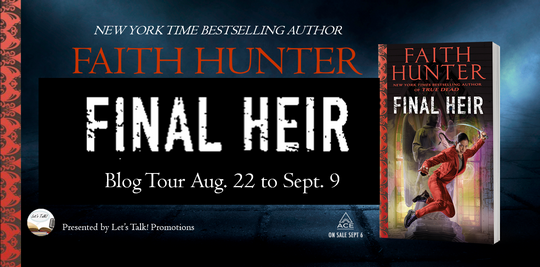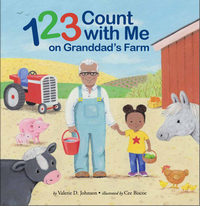Earlier today, I posted about James Brayken’s debut, The Veiled Edge of Contact (please give it a look if you haven’t seen it yet). Now I get to ask the author a few questions. I really appreciated his answers and time. Hope you enjoy this!
Why don’t we start off with you telling us a little about yourself, what got you into writing/your path to publication, and so on.
Ever since I was a teenager I wanted to write novels, but for a long time I didn’t seriously pursue that goal because whenever I sat down to write, I found I didn’t really know how to effectively express the ideas in my head. So, I would stop before giving my ideas much of a chance. Not until I took up drawing as a hobby did I fully appreciate that you need to work through the initial difficulty when you first put pencil to paper and what comes out isn’t what you intended. Rather than stop in disappointment, I realized I needed to keep drawing and redrawing, and the improvement was visually obvious. They say that writing is mostly rewriting, and once I fully digested that, everything changed.
How much of James Brayken is there in Okon (or another character from the book)?
Ha, hopefully Okon and I don’t share too many characteristics. But admittedly, I would imagine there is a bit of me in all of the book’s characters. Some of these shared characteristics I’m aware of and some, I’m sure, I’m completely oblivious to. That said, I think who we are is many-sided and fluctuating, i.e., I think we all have the capacity to be a bit Okon-like from time to time.
Clearly (well, it seems clear to me), the stories told here aren’t something you arrive at all at once, can you describe the genesis of the idea?
In the early stages, I naturally turned to the things that were of interest to me. In fact, I have a rule that I only write about what I’m personally interested in rather than what I think others might like. I’ve always been fascinated by the existence of uncontacted tribes (although they are growing fewer in number, there are still at least a hundred uncontacted tribes out there according to estimates), and I’ve always been captivated by the idea of extraterrestrial contact and what the outcome of this might be. I think the genesis point came when I began exploring how different levels and types of “first contact” might be overlaid in the same story, and this theme formed the foundation of the narrative for The Veiled Edge of Contact.
All authors have more ideas running around in their head than they can possibly develop—what was it about this idea that made you commit to it?
I do recall being acutely aware that I could forever flit between entirely different ideas and never develop any of them to any substantial degree. And so, I made another rule (I like giving myself rules) that I would stick with my uncontacted tribe/alien contact premise because I was personally excited by the potential scenarios that might unfold. I kept playing with that premise until (after many many iterations of ideas and drafts) I had a fully fledged story that I was happy with.
Not to pick a fight here, but you’ve described the book as “genre-breaking.” I’m not sure that I buy that. In your mind, what do you mean by that phrase and how does your novel do that?
I use the term “genre-breaking” as shorthand communication to potential readers that this science fiction novel breaks a number of first contact sci fi conventions. It’s tricky to be too specific about this without giving spoilers, but I want readers to know up front that this book is going to be different from what they might typically expect of a first contact story, and feedback from readers seems to agree that this book is “different”, “surprising”, “unusual”, “refreshing”, etc.
Just to add, I have no issue with conventions. I love them, in fact. They are integral to how we communicate through narrative, and The Veiled Edge of Contact certainly contains conventions including those that place the book firmly within the genre of sci fi (advanced tech, extraterrestrials, etc.). But the story also contains a number of atypical elements and atypical turns. This is what I want potential readers to be aware of so they can make an informed decision as to whether the book is something they might like.
It’s hard to pick just one or two things to focus on to ask about that don’t involve spoiling the whole book…but I want to talk about Ratu for a minute. I don’t know precisely what to ask—just tell the reader something you want to know about him.
I really enjoyed developing the character of Ratu and in particular his interactions with Okon. I have a theory that “outsiders” tend to be drawn to each other, perhaps sometimes by necessity, even if they have nothing in common except the fact that they don’t fit in very well elsewhere. That in itself can be a bond. I view Okon and Ratu in this way. They squabble like siblings but are initially bonded by their outsider-like status. Another reason I enjoyed developing Ratu’s character is that he annoys the other characters and through doing so we get to learn more about not just Ratu but also those he has annoyed—usually Okon. Not that Ratu is the only tribe member to rub others the wrong way. Far from it. I was very keen for the Wuchumbu to be a living, breathing collection of individuals, each with their own set of idiosyncrasies and opinions. And the result is they bicker a lot.
What was the harder thing to develop and write about—the SF future tech and culture or the culture and practices of the Wuchumbu?
I’d say I found the culture of the Wuchumbu to be less difficult to develop and write about than the SF future tech. Perhaps I felt this way simply because I so much enjoyed bringing the Wuchumbu to life—establishing their values and cultural practices, defining what it is that unites them and makes them Wuchumbu and what it is that separates them from their fellow tribe members. In my view, the tribe are the lifeblood of the novel, and, ultimately, it’s the characters that cause us to invest in a story, right? Well, for me that’s the case.
Who are some of your major influences? (whether or not you think those influences can be seen in your work—you know they’re there)
If we are talking about artists, writers, and filmmakers then my thoughts initially turn to the cyberpunk genre. Although The Veiled Edge of Contact isn’t cyberpunk, I am a big fan of the genre and I’m sure it has influenced me and will continue to do so. The classics of cyberpunk (including proto-cyberpunk) have probably influenced me most, such as Neuromancer (William Gibson), Do Androids Dream of Electric Sheep? (Philip K. Dick), both Blade Runner movies (Ridley Scott and Denis Villeneuve), and the original Ghost in the Shell manga (Masamune Shirow). I imagine the cyberpunk influence will become more apparent the more work I produce. I’m also a fan of horror and so there will be some influences creeping in from there too.
I wouldn’t have guessed cyberpunk to be in that spot (there’s a reason I say “you know they’re there”), but I have to say after reading that answer that I can see that in the background of the novel (deep background, maybe—it’s in the DNA).
Let’s play “Online Bookstore Algorithm.” What are 3-5 books whose readers may like The Veiled Edge of Contact?
Okay. I promise I won’t cheat by looking at the Goodreads “Readers Also Enjoyed” section. So, I think if you like sci fi stories (or any story really) that involve unusual scenarios with some humor and darkness thrown in the mix, then you may well like The Veiled Edge of Contact. With that in mind, I’ll include Annihilation by Jeff VanderMeer in my answer for its unusual scenario and darkness. Annihilation is a very different type of book than mine, but there are some similarities in subject. I’d also include Oryx and Crake by Margaret Atwood for its eccentricity and humor. And finally, The Gone World by Tom Sweterlitsch for its dark tone—a tone that sometimes surfaces in The Veiled Edge of Contact.
Disclaimer: I find it difficult to predict what people will like. It seems to me that taste is a complex beast.
What’s next for James Brayken, author?
I’m presently developing the idea for my second novel, which will also be science fiction, and I intend to publish it some time in the second half of 2023. Well, actually, I’m developing two ideas concurrently as I’ve been unable to decide which one to go with next. Hopefully I’ll be able make that decision soon. I’ll probably need to make another rule for myself!
Thanks for your time—and thanks for The Veiled Edge of Contact, I was swept up in it and I hope you have plenty of success with it.
Thank you, H.C. Newton. It’s been a pleasure.








